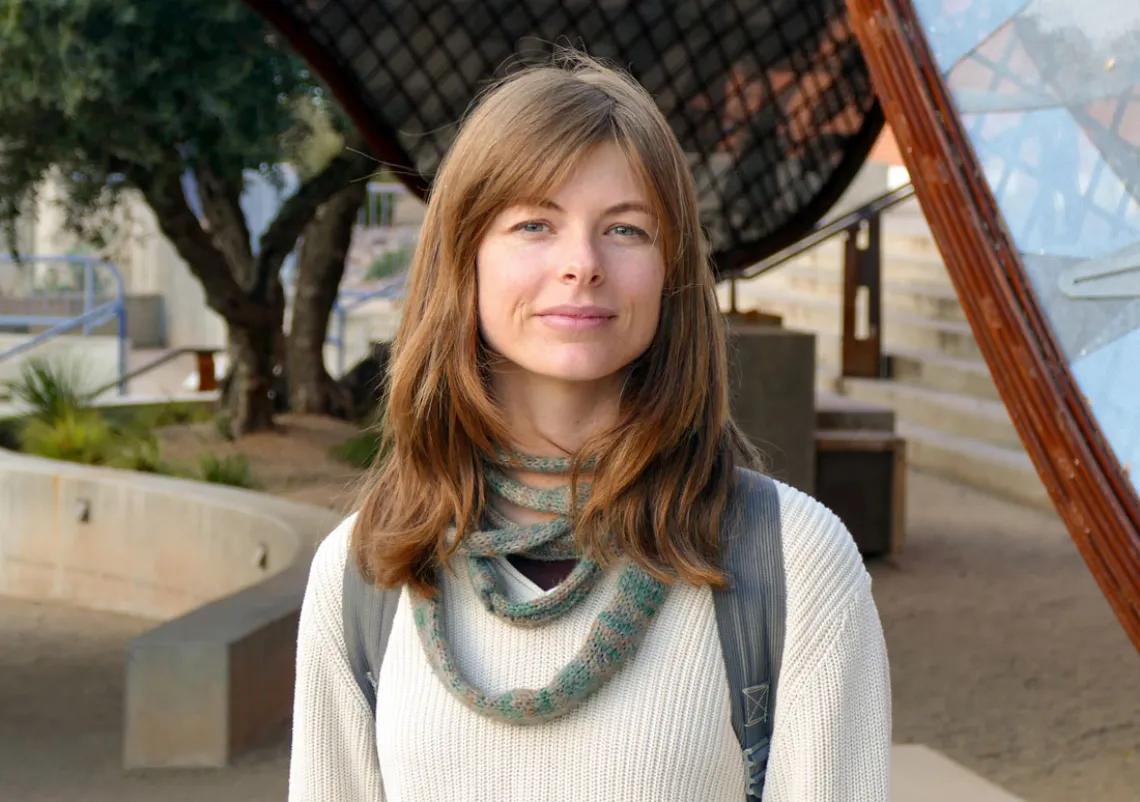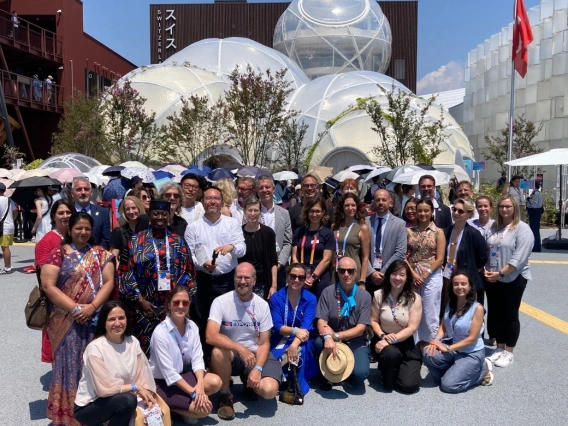Making Public Spaces Matter: Ariel Fry ’20 MS Urban Planning

Ariel Fry ’20 MS Urban Planning recalls walking in downtown Tucson one day seven years ago, thinking about how unfriendly the landscape was. Not the Sonoran Desert landscape—being from the small town of Ajo, Arizona, she was familiar with the rugged and beautiful desert.
Instead, her concern was with the infrastructure—the cracked sidewalks, the missing benches. “Where were the drinking fountains, the shade?” she asked. Her walk from point A to point B lacked what she now refers to as walkability.
Though Tucson and Fry both have come a long way in that time, her passion for using public spaces to enrich people’s lives remains. It’s one reason she enrolled in the Master of Science in Urban Planning in the College of Architecture, Planning and Landscape Architecture: with an undergraduate degree in anthropology, she wanted to learn more about how we can create places where people will come together for the sheer joy of those spaces and not, as we see so much today she says, “spaces designed for consumerism.”
Still, when she entered the program in 2018, urban planning as a field felt a bit overwhelming. “I couldn’t quite see how I fit into ‘planning’—how I wanted to contribute to the field in my particular work.”
Other than her keen observations of the city and her academic background in human societies and culture, she didn’t have design or neighborhood planning skills. After college, she had worked with Arizona Serve, a host for Americorps in Tucson, plus an information design company. Interesting, but not exactly career-track for urban planning.
Fortunately, “the CAPLA Master’s in Urban Planning curriculum provides a really good mix of the academic and the applied,” she says, allowing Fry to hone in on the areas she’s discovered she enjoys most in the program: community development, planning methods, site analysis and heritage conservation.
“And the program’s small size is great,” she says. “As an undergrad I didn’t have the camaraderie that I experienced here right from the get-go.” It’s a strong cohort, where “everybody helps each other and there’s real companionship.”
That relationship is evident in the program’s capstone course, where students this year are working with the City of Tucson to create policy recommendations to help mitigate issues of gentrification and displacement. “It’s a pretty heavy project because that’s such a huge issue in Tucson,” she says. “Our job is to conduct research on different cities and programs—what’s worked, what hasn’t—and then create recommendations for the city to move forward.”
As the same time, in her planning preservation class Fry and fellow students are undertaking cultural asset mapping. In their first meeting with the neighborhood, “we walked around with community leaders and mapped all of the assets”—a project that will tie back into the capstone.
Walking—seeing places at the human scale—has particularly informed Fry’s purpose since she spent nine months in Paris before returning for the last two years of her undergraduate degree. “That had a big impact in terms of how I understand public space can be used—the density, the public art, everything! ‘You spend a year in Paris and you spend the rest of your life thinking about it,’ as they say...”
But a return trip to Paris last winter “allowed me to let go of the nostalgia; it’s a real place and I don’t have to romanticize it, after all,” she says, though it’s clear that public space as experience remains central for Fry.
“How can we experience our environments beyond consumerism? What is the space in between points A and B that people can experience? Community art, storytelling and heritage conservation all play a part.”
For Fry, the answers to those big questions lie not just in public art, but in the personal, as well. “Art is a big part of what drives me. I like to make things—I’m a maker. Art plays an important role in what I want to be doing with my time, both personal and professional.”



